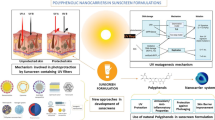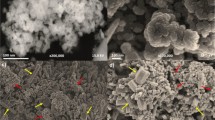Abstract
Studies have demonstrated bacterial inactivation by radiations at wavelengths between 400 and 500 nm emitted by low-power light sources. The phototoxic activity of these radiations could occur by oxidative damage in DNA and membrane proteins/lipids. However, some cellular mechanisms can reverse these damages in DNA, allowing the maintenance of genetic stability. Photoreactivation is among such mechanisms able to repair DNA damages induced by ultraviolet radiation, ranging from ultraviolet A to blue radiations. In this review, studies on the effects of violet and blue lights emitted by low-power LEDs on bacteria were accessed by PubMed, and discussed the repair of ultraviolet-induced DNA damage by photoreactivation mechanisms. Data from such studies suggested bacterial inactivation after exposure to violet (405 nm) and blue (425–460 nm) radiations emitted from LEDs. However, other studies showed bacterial photoreactivation induced by radiations at 348–440 nm. This process occurs by photolyase enzymes, which absorb photons at wavelengths and repair DNA damage. Although authors have reported bacterial inactivation after exposure to violet and blue radiations emitted from LEDs, pre-exposure to such radiations at low fluences could activate the photolyases, increasing resistance to DNA damage induced by ultraviolet radiation.


Similar content being viewed by others
References
Lubart R, Lipovsky A, Nitzan Y, Friedmann H (2011) A possible mechanism for the bactericidal effect of visible light. Laser Ther 20(1):17–22. https://doi.org/10.5978/islsm.20.17
Fonseca AS, Teixeira AF, Presta GA, Geller M, Valença SS, Paoli F (2012) Low intensity infrared laser effects on escherichia coli cultures and plasmid DNA. Laser Phys 22:1635–164. https://doi.org/10.1134/S1054660X12100076
Diogo MLG, Campos TM, Fonseca ESR, Pavini C, Horliana ACRT, Fernandes KPS, Bussadori SK, Fantin FGMM, Leite DPV, Yamamoto ATA, Navarro RS, Motta LJ (2021) Effect of blue light on acne vulgaris: a systematic review. Sensors 21(20):6943. https://doi.org/10.3390/s21206943
Ribeiro RS, Rodrigues JA, Mencalha AL, Fonseca AS (2023) Low-power blue LED and red laser effects on plasmid DNA, survival and photolyase mRNA levels in Escherichia coli cultures. Laser Phys Lett 20(8):085601. https://doi.org/10.1088/1612-202X/ace0b1
Karu T, Tiphlova O, Esenaliev R, Letokhov V (1994) Two different mechanisms of low-intensity laser photobiological effects on Escherichia coli. J Photochem Photobiol B 24(3):155–161. https://doi.org/10.1016/1011-1344(94)07016-4
Fonseca AS, Moreira TO, Paixão DL, Farias FM, Guimarães OR, Paoli S, Geller M, Paoli F (2010) Effect of laser therapy on DNA damage. Laser Surg Med 42:481–488. https://doi.org/10.1002/lsm.20921
Lima AMCT, Sergio LPD, Fonseca AS (2020) Photobiomodulation via multilple-wavelenght radiations. Lasers Med Sci 35:307–316. https://doi.org/10.1007/s10103-019-02879-1
Kumar A, Ghate V, Kim M-J, Zhou W, Khoo GH, Yuk H-G (2015) Kinetics of bacterial inactivation by 405 nm and 520 nm light emitting diodes and the role of endogenous coproporphyrin on bacterial susceptibility. J Photochem Photobiol B 149:37–44. https://doi.org/10.1016/j.jphotobiol.2015.05.005
Kim S, Kim J, Lim WB, Jeon S, Kim O, Koh JT, Kim C-S, Choi H, Kim, (2013) In vitro bactericidal effects of 625, 525, and 425nm wavelength (red, green, and blue) light-emitting diode irradiation. Photomed Laser Surg 31(11):554–562. https://doi.org/10.1089/pho.2012.3343
Wang Y, Wang Y, Wang Y, Murray CK, Hamblin MR, Hooper DC, Dai T (2017) Antimicrobial blue light inactivation of pathogenic microbes: state of art. Drug Resis Updat 33–35:1–22. https://doi.org/10.1016/j.drup.2017.10.002
Yoshida A, Sasaki H, Toyama T, Araki M, Fujioka J, Tsukiyama K, Hamada N, Yoshino F (2017) Antimicrobial effect of blue light using Porphyromonas gengivalis pigment. Sci Rep 7(1):5225. https://doi.org/10.1038/s41598-017-05706-1
Sinha RP, Häder DP (2002) UV-induced DNA damage and repair: a review. Photochem Photobiol Sci 1(4):225–236. https://doi.org/10.1039/b201230h
Schleicher E, Hessling B, Illarionova V, Bacher A, Weber S, Richter G, Gerwert K (2005) Light-induced reactions of Escherichia coli DNA photolyase monitored by Fourier transforminfrared spectroscopy. FEBS J 272(8):1855–1866. https://doi.org/10.1111/j.1742-4658.2005.04617.x
Harper JW, Elledge SJ (2007) The DNA damage response: ten years after. Mol Cell 28(5):739–745. https://doi.org/10.1016/j.molcel.2007.11.015
Jiang Y, Rabbi M, Kim M, Ke C, Lee W, Clark RL, Mieczkowski PA, Marszalek PE (2009) UVA generates pyrimidine dimers in DNA directly. Biophys J 96(3):1151–1158. https://doi.org/10.1016/j.bpj.2008.10.030
Zhang M, Wang L, Zhong D (2017) Photolyase: dynamics and mechanisms of repair of sun-induced DNA damage. Photochem Photobiol 93(1):78–92. https://doi.org/10.1111/php.12695
Zhang M, Wang L, Zhong D (2017) Photolyase: dynamics and electron-transfer Mechanisms of DNA repair. Arch Biochem Biophys 632:158–174. https://doi.org/10.1016/j.abb.2017.08.007
Chatterjee N, Walker GC (2017) Mechanisms of DNA damage, repair and mutagenesis. Environ Mol Mutagen 58(5):235–263. https://doi.org/10.1002/em.22087
Liu Z, Wang L, Zhong D (2015) Dynamics and mechanisms of DNA repair by photolyase. Phys Chem Chem Phys 17(18):11933–11949. https://doi.org/10.1039/C4CP05286B
Sancar GB, Smith FW, Reid R, Payne G, Levy M, Sancar A (1987) Action mechanism of Escherichia coli DNA photolyase I Formation of the enzyme-substrate complex. J Biol Chem 262(1):478–485
Sancar A (2008) Structure and function of photolyase and in vivo Enzymology: 50th Anniversary. J Biol Chem 283(47):32153–32157. https://doi.org/10.1074/jbc.R800052200
Terai Y, Sato R, Matsumura R, Iwai S, Yamamoto J (2020) Enhanced DNA repair by DNA photolyase bearing an artificial light-harvesting chromophore. Nucleic Acids Res 48(18):10076–10086. https://doi.org/10.1093/nar/gkaa719
Liebel F, Kaur S, Ruvolo E, Kollias N, Southall MD (2012) Irradiation of skin with visible light induces reactive oxygen species and matrix-degrading enzymes. J Invest Dermatol 132(7):1901–1907. https://doi.org/10.1038/jid.2011.476
Nakashima Y, Ohta S, Wolf AM (2017) Blue light-induced oxidative stress in live skin. Free Radic Biol Med 108:300–310. https://doi.org/10.1016/j.freeradbiomed.2017.03.010
Arthaut LD, Jourdan N, Mteyrek A, Procopio M, El-Esawi M, d’Harlingue A, Bouchet PE, Witczak J, Ritz T, Klarsfeld A, Birman S, Usselman RJ, Hoecker U, Martino CF, Ahmad M (2017) Blue-light induced accumulation of reactive oxygen species is a consequence of the Drosophila cryptochrome photocycle. PLoS ONE 12(3):e0171836. https://doi.org/10.1371/journal.pone.0171836
Omata Y, Lewis JB, Rotenberg S, Lockwood PE, Messer RL, Noda M, Hsu SD, Sano H, Wataha JC (2006) Intra- and extracellular reactive oxygen species generated by blue light. J Biomed Mater Res A 77(3):470–477. https://doi.org/10.1002/jbm.a.30663
Bae S, Oh T (2018) In vitro bactericidal activity of 465–470 nm blue light phototherapy and aminolevulinic acid on Staphylococcus pseudintermedius. Vet Dermatol. https://doi.org/10.1111/vde.12651
Fukui M, Yoshioka M, Satomura K, Nakanishi H, Nagayama M (2008) Specific-wavelength visible light irradiation inhibits bacterial growth of Porphyromonas gingivalis. J Periodont Res 43(2):174–178. https://doi.org/10.1111/j.1600-0765.2007.01009.x
Dos Anjos C, Sellera FP, Ribeiro MS, Baptista MS, Pogliani FC, Lincopan N, Sabino CP (2020) Antimicrobial blue light and photodynamic therapy inhibit clinically relevant β-lactamases with extended-spectrum (ESBL) and carbapenemase activity. Photodiagnosis Photodyn Ther 32:102086. https://doi.org/10.1016/j.pdpdt.2020.102086
Ferrer-Espada R, Wang Y, Goh XS, Dai T (2020) Antimicrobial blue light inactivation of microbial isolates in biofilms. Lasers Surg Med 52(5):472–478. https://doi.org/10.1002/lsm.23159
Beck SE, Ryu H, Boczek LA, Cashdollar JL, Jeanis KM, Rosenblum JS, Lawal OR, Linden KG (2017) Evaluating UV-C LED disinfection performance and investigating potencial dual-wavelenght synergy. Water Res 109:207–216. https://doi.org/10.1016/j.watres.2016.11.024
Maclean M, MacGregor SJ, Anderson JG, Woolsey G (2009) Inactivation of bacterial pathogens following exposure to light from a 405-nanometer light-emitting diode array. Appl Environ Microbiol 75(7):1932–1937. https://doi.org/10.1128/AEM.01892-08
Fila G, Kawiak A, Grinholc MS (2017) Blue light treatment of Pseudomonas aeruginosa: strong bactericidal activity, synergism with antibiotics and inactivation of virulence factors. Virulence 8(6):938–958. https://doi.org/10.1080/21505594.2016.1250995
De Lucca AJ, Carter-Wientjes C, Williams KA, Bhatnagar D (2012) Blue light (470 nm) effectively inhibits bacterial and fungal growth. Lett Appl Microbiol 55(6):460–466. https://doi.org/10.1111/lam.12002
Dorey AL, Lee B-H, Rotter B, O’Byrne CP (2019) Front microbiol blue light sensing in listeria monocytogenes is temperature-dependent and the transcriptional response to it is predominantly SigB-dependent. Front Microbiol 10:2497. https://doi.org/10.3389/fmicb.2019.02497
Zhang Y, Zhu Y, Gupta A, Huang Y, Murray CK, Vrahas MS, Sherwood ME, Baer DG, Hamblin MR, Dai T (2014) Antimicrobial blue light therapy for multidrug-resistant Acinetobacter baumannii Infection in a mouse burn model: implications for prophylaxisand treatment of combat-related wound infections. J Infect Dis 209(12):1963–1971. https://doi.org/10.1093/infdis/jit842
Cieplik F, Späth A, Leibl C, Gollmer A, Regensburger J, Tabenski L, Hiller K-A, Maisch T, Schmalz G (2014) Blue light kills Aggregatibacter actinomycetemcomitans due to its endogenous photosensitizers. Clin Oral Invest 18(7):1763–1769. https://doi.org/10.1007/s00784-013-1151-8
Maclean M, Anderson JG, MacGregor SJ, White T, Atreya CD (2016) A new proof of concept in bacterial reduction: antimicrobial action of violet-blue light (405 nm) in ex vivo stored plasma. J Blood Trans 2016:2920514. https://doi.org/10.1155/2016/2920514
Biener G, Masson-Meyers DS, Bumah VV, Hussey G, Stoneman MR, Enwemeka CS, Raicu V (2017) Blue/violet laser inactivates methicillin-resistant Staphylococcus aureus by altering its transmembrane potential. J Photochem Photobiol B 170:118–124. https://doi.org/10.1016/j.jphotobiol.2017.04.002
Plavskii VY, Mikulich AV, Tretyakova AI, Leusenka IA, Plavskaya LG, Kazyuchits OA, Dobysh II, Krasnenkova TP (2018) Porphyrins and flavins as endogenous acceptors of optical radiation of blue spectral region determining photoinactivation of microbial cells. J Photochem Photobiol B 183:172–183. https://doi.org/10.1016/j.jphotobiol.2018.04.021
Gomez GF, Huang R, MacPherson M, Zandona AGF, Gregory RL (2016) Photo inactivation of Streprococcus mutans biofilm by violet-blue light. Curr Microbiol 73(3):426–433. https://doi.org/10.1007/s00284-016-1075-z
Dos Anjos C, Sabino CP, Bueris V, Fernandes MR, Pogliani FC, Lincopan N, Sellera FP (2019) Antimicrobial blue light inactivation of international clones of multidrug-resistant Escherichia coli ST10, ST131 and ST648. Photodiagnosis Photodyn Ther 27:51–53. https://doi.org/10.1016/j.pdpdt.2019.05.014
Angarano V, Smet C, Akkermans S, Watt C, Chieffi A, Impe JFMV (2020) Visible light as an antimicrobial strategy for inactivation of Pseudomonas fluorescens and Staphylococcus epidermidis Biofilms. Antibiotics (Basel) 9(4):171. https://doi.org/10.3390/antibiotics9040171
Hadi J, Wu S, Brightwell G (2020) Antimicrobial blue light versus pathogenic bacteria: mechanism, application in the food industry, hurdle technologies and potential resistance. Foods 9(12):1895. https://doi.org/10.3390/foods9121895
Keyvan E, Kahraman HA, Tutun H, Donmez S, Sen E, Demirtas A, Akyuz AO (2021) Inactivation efficacy of 405 nm light emitting diodes (LEDs) on Salmonella Enteritidis at different illumination temperatures. Food Sci Technol 42:e08721. https://doi.org/10.1590/fst.08721
Ganz RA, Viveiros J, Ahmad A, Ahmadi A, Khalil A, Tolkoff MJ, Nishioka NS, Hamblin MR (2005) Helicobacter pylori in patients can be killed by visible light. Lasers Surg Med 36(4):260–265. https://doi.org/10.1002/lsm.20161
Rapacka-Zdonczyk A, Wozniak A, Kruszewska B, Waleron K, Grinholc M (2021) Can Gram-negative bacteria develop resistance to antimicrobial blue light treatment? Int J Mol Sci 22(21):11579. https://doi.org/10.3390/ijms222111579
Metzger M, Hacobian A, Karner L, Krausgruber L, Grillari J, Dungel P (2022) Resistance of bacteria toward 475 nm blue light exposure and the possible role of the SOS response. Life 12(10):1499. https://doi.org/10.3390/life12101499
Amin RM, Bhayana B, Hamblin MR, Dai T (2016) Antimicrobial blue light inactivation of Pseudomonas aeruginosa by photo-excitation of endogenous porphyrins: in vitro and in vivo studies. Lasers Surg Med 48(5):562–568. https://doi.org/10.1002/lsm.22474
Tomb RM, Maclean M, Coia JE, MacGregor SJ, Anderson JG (2017) Assessment of the potential for resistance to antimicrobial violet-blue light in <i>Staphylococcus aureus</i>. Antimicrob Resist Infect Control 29(6):100. https://doi.org/10.1186/s13756-017-0261-5
Leanse LG, Harrington OD, Fang Y, Ahmed I, Goh XS, Dai T (2018) Evaluating the potential for resistance development to antimicrobial blue light (at 405 nm) in Gram-negative bacteria: In vitro and in vivo Studies. Front Microbiol 16(9):2403. https://doi.org/10.3389/fmicb.2018.02403
Kohli R, Gupta PK, Dube A (2000) Helium-neon laser preirradiation induces protection against UVC radiation in wild-type E. colistrain K12AB1157. Radiat Res 153:181–185. https://doi.org/10.1667/0033-7587(2000)153[0181:HNLPIP]2.0.CO;2
Purbhoo-Makan M, Houreld NN, Enwemeka CS (2022) The effects of blue light on human fibroblasts and diabetic wound healing. Life (Basel) 12(9):1431. https://doi.org/10.3390/life12091431
Funding
This research was supported by Fundação de Amparo à Pesquisa do Estado do Rio de Janeiro (FAPERJ), Conselho Nacional de Desenvolvimento Científico e Tecnológico (CNPq), and Universidade do Estado do Rio de Janeiro (UERJ).
Author information
Authors and Affiliations
Contributions
Rickson Souza Ribeiro: conceptualization, methodology, resources, and writing of the original draft. Andre Luiz Mencalha: data curation, visualization, review, and editing. Adenilson de Souza da Fonseca: conceptualization, methodology, review, editing, and supervision.
Corresponding author
Ethics declarations
Ethics approval
Not applicable.
Conflict of interest
The authors declare no competing interests.
Additional information
Publisher's Note
Springer Nature remains neutral with regard to jurisdictional claims in published maps and institutional affiliations.
Rights and permissions
Springer Nature or its licensor (e.g. a society or other partner) holds exclusive rights to this article under a publishing agreement with the author(s) or other rightsholder(s); author self-archiving of the accepted manuscript version of this article is solely governed by the terms of such publishing agreement and applicable law.
About this article
Cite this article
Ribeiro, R.S., Mencalha, A.L. & de Souza da Fonseca, A. Could violet-blue lights increase the bacteria resistance against ultraviolet radiation mediated by photolyases?. Lasers Med Sci 38, 253 (2023). https://doi.org/10.1007/s10103-023-03924-w
Received:
Accepted:
Published:
DOI: https://doi.org/10.1007/s10103-023-03924-w




